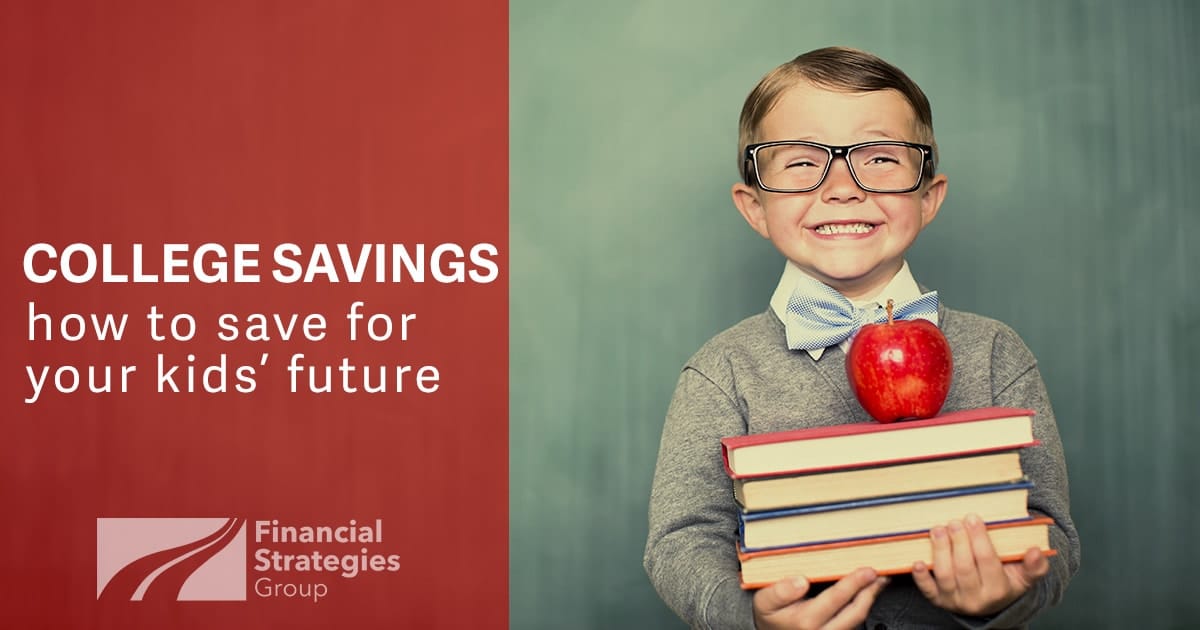The impact of investing on college savings for high schoolers – Investing Early: Impact on High Schoolers’ College Savings sets the stage for this enthralling narrative, offering readers a glimpse into a story that is rich in detail and brimming with originality from the outset. The rising cost of college education is a significant concern for families across the globe, and starting college savings early can make a substantial difference in achieving financial independence for higher education.
This article delves into the world of investing for high schoolers, exploring how strategic financial planning can help them secure their future and unlock the potential of a college education.
The journey to college is often paved with financial uncertainties, but by understanding the power of investing, high schoolers can navigate these challenges with confidence. From the fundamentals of compound interest to the intricacies of various investment vehicles, this exploration will equip young investors with the knowledge and tools to make informed decisions.
By harnessing the power of early investing, high schoolers can take control of their financial destiny and pave the way for a brighter future.
The Importance of College Savings: The Impact Of Investing On College Savings For High Schoolers

The cost of a college education has been steadily rising for decades, posing a significant financial burden on families. This trend is expected to continue, making it more crucial than ever for high schoolers to start saving for college early.Starting college savings early offers numerous benefits, including reducing the financial burden on families and increasing accessibility to higher education.
Early savings can help families avoid taking on substantial student loans, which can have long-term financial implications.
College Savings Plans
There are several different college savings plans available, each with its own set of benefits and features. These plans can help families accumulate funds for college expenses tax-advantaged. Here are some of the most popular college savings plans:
- 529 Plans: These state-sponsored plans offer tax advantages for saving for college expenses. Contributions to 529 plans grow tax-deferred, and withdrawals are tax-free when used for qualified educational expenses.
- Coverdell ESAs: These are tax-advantaged savings accounts that can be used for a variety of educational expenses, including college tuition, fees, books, and supplies. Contributions to Coverdell ESAs are limited to $2,000 per year per beneficiary, and withdrawals are tax-free when used for qualified educational expenses.
Investing Strategies for High Schoolers

Investing for college can seem daunting, especially for high schoolers. However, with careful planning and a long-term perspective, you can build a solid foundation for your future education. This section will explore various investment options suitable for high schoolers, considering their risk tolerance and time horizon.
We will also delve into the advantages and disadvantages of different investment vehicles and provide a hypothetical portfolio example.
Stocks
Stocks represent ownership in a company. When you invest in stocks, you become a shareholder and potentially share in the company’s profits through dividends. Stocks are considered a high-risk, high-reward investment, as their value can fluctuate significantly. However, over the long term, stocks have historically outperformed other investment options, making them a suitable choice for high schoolers with a long time horizon.
- Advantages:Potential for high returns, ownership in a company, dividends, liquidity (can be easily bought and sold).
- Disadvantages:High volatility, risk of losing money, requires research and knowledge.
Bonds
Bonds are loans that you make to a company or government entity. In return for lending your money, you receive interest payments and the principal back at maturity. Bonds are generally considered less risky than stocks, as they offer a fixed rate of return and are less volatile.
However, their potential for growth is also lower.
- Advantages:Lower risk than stocks, fixed interest payments, principal repayment at maturity.
- Disadvantages:Lower potential returns than stocks, interest rates can fluctuate, risk of default.
Mutual Funds
Mutual funds are investment vehicles that pool money from multiple investors to purchase a diversified portfolio of stocks, bonds, or other assets. They offer a convenient and affordable way to invest in a variety of asset classes.
- Advantages:Diversification, professional management, low minimum investment amounts.
- Disadvantages:Fees, potential for underperformance, limited control over individual investments.
Exchange-Traded Funds (ETFs)
ETFs are similar to mutual funds, but they are traded on stock exchanges like individual stocks. They offer diversification and professional management at a lower cost than traditional mutual funds.
- Advantages:Diversification, lower fees than mutual funds, liquidity, transparency.
- Disadvantages:Potential for tracking error, may not be suitable for all investment goals.
Hypothetical Portfolio Example
Let’s consider a hypothetical portfolio for a high school student with a long time horizon and a moderate risk tolerance.
- Stocks:50% – This portion can be invested in a broad-market index fund or ETF that tracks the S&P 500, which represents a diverse selection of large-cap U.S. companies. This provides exposure to the overall market growth potential.
- Bonds:30% – This portion can be invested in a low-cost bond index fund or ETF that tracks the aggregate bond market. This provides stability and income potential with lower risk compared to stocks.
- Mutual Funds:20% – This portion can be invested in a diversified mutual fund or ETF that invests in a mix of stocks and bonds. This allows for further diversification and potential growth with moderate risk.
This is just a hypothetical example, and the actual allocation should be tailored to the individual’s specific financial goals, risk tolerance, and time horizon. It is always recommended to consult with a financial advisor for personalized advice.
The Impact of Investing on College Savings
Investing for college can significantly boost your savings potential, allowing you to reach your financial goals faster and with less stress. While the stock market can fluctuate, long-term investing offers the potential for substantial growth, especially when you consider the power of compounding interest.
The Power of Compounding Interest
Compounding interest is the phenomenon where you earn interest not only on your initial investment but also on the accumulated interest. This creates a snowball effect, leading to exponential growth over time. Imagine investing $1,000 at an annual return of 7%.
After one year, you’d have $1,070. In the second year, you’d earn interest on $1,070, leading to even greater growth. This compounding effect accelerates your savings, making investing a powerful tool for college funding.
Investing early can significantly impact a high schooler’s college savings, potentially easing the financial burden on their families. While substantial investments might not be feasible, there are still valuable options for those with limited income. Check out our guide on Best investment options for high schoolers with limited income to discover strategies that can help them build a strong financial foundation for their future education.
Real-Life Examples of Early Investing
Early investing can have a dramatic impact on college savings. Let’s consider two scenarios:* Scenario 1:A student invests $1,000 at age 16, earning an average annual return of 8%. By the time they turn 18, their investment would have grown to approximately $1,166.
Scenario 2
Another student waits until age 18 to invest $1,000, also earning an average annual return of 8%. By the time they turn 21, their investment would have grown to approximately $1,259. While the difference may seem small initially, the earlier investment allows for more time for compounding, resulting in a larger sum by the time the student reaches college age.
Comparison of Investment Options
The potential returns of different investment options vary based on factors such as risk tolerance, investment timeframe, and market conditions. Here’s a table comparing the potential returns of various options over different timeframes:
| Investment Option | Timeframe (Years) | Potential Annual Return |
|---|---|---|
| Savings Account | 1 | 0.5%-1% |
| Savings Account | 5 | 0.5%-1% |
| Savings Account | 10 | 0.5%-1% |
| High-Yield Savings Account | 1 | 1%-2% |
| High-Yield Savings Account | 5 | 1%-2% |
| High-Yield Savings Account | 10 | 1%-2% |
| Index Funds | 1 | 5%-10% |
| Index Funds | 5 | 7%-12% |
| Index Funds | 10 | 8%-15% |
| Individual Stocks | 1 | -10% to 20% |
| Individual Stocks | 5 | -5% to 15% |
| Individual Stocks | 10 | 0% to 20% |
Note:These are just potential returns and actual results may vary. It’s essential to research and understand the risks involved in any investment.
Financial Literacy and Investment Education
Financial literacy is crucial for high schoolers, especially when it comes to making informed decisions about their college savings. Understanding basic financial concepts, including budgeting, saving, and investing, empowers them to take control of their future and achieve their financial goals.
Resources and Tools for Financial Education
Access to reliable resources and tools is essential for high schoolers to learn about investing and personal finance. These resources can provide valuable insights and practical guidance to help them navigate the complex world of finance.
- Online Courses and Educational Platforms:Numerous online platforms offer interactive courses and educational materials on personal finance and investing, tailored specifically for high schoolers. These platforms often provide engaging content, quizzes, and real-life examples to make learning fun and accessible.
- Financial Literacy Programs:Many schools and community organizations offer financial literacy programs that provide hands-on workshops and seminars on topics such as budgeting, saving, and investing. These programs can help high schoolers develop essential financial skills and knowledge.
- Financial Websites and Blogs:Websites and blogs dedicated to personal finance and investing can offer valuable information, articles, and tools for high schoolers. These resources can provide insights into different investment strategies, market trends, and financial planning tips.
- Books and Articles:Numerous books and articles on personal finance and investing are available for high schoolers. These resources can provide comprehensive knowledge and practical advice on managing money, saving for college, and investing wisely.
Seeking Guidance from Financial Advisors or Mentors
While online resources and educational materials are helpful, seeking guidance from experienced financial advisors or mentors can provide personalized advice and support.
- Financial Advisors:Financial advisors can provide expert guidance on investment strategies, risk management, and portfolio diversification. They can help high schoolers develop a personalized financial plan tailored to their specific goals and circumstances.
- Mentors:Mentors who have experience in finance or investing can provide valuable insights and guidance. They can share their knowledge, experiences, and best practices to help high schoolers make informed investment decisions.
The Psychological Impact of Investing

Investing, while a powerful tool for building wealth, can be a psychologically challenging endeavor. The roller coaster ride of market fluctuations can evoke a range of emotions, from exhilarating highs to crushing lows. Understanding these psychological aspects is crucial for high schoolers embarking on their investment journey, as it can significantly impact their decision-making and long-term success.
The Influence of Fear and Greed
Fear and greed are two powerful emotions that can significantly impact investment decisions. Fear, often driven by market downturns or negative news, can lead to selling investments at a loss, locking in losses, and missing out on potential future gains.
Conversely, greed, fueled by market rallies or the desire for quick profits, can lead to impulsive buying decisions, overpaying for assets, and taking on excessive risk.
“The most important thing is to avoid the extremes of fear and greed.”
Warren Buffett
Developing a Disciplined Approach to Investing
To navigate the emotional rollercoaster of investing, high schoolers need to develop a disciplined approach. This involves:
- Setting clear financial goals:Defining specific goals, such as saving for college, provides a clear direction and motivation for investing.
- Creating a diversified investment portfolio:Diversification spreads risk across different asset classes, mitigating the impact of any single investment’s performance.
- Sticking to a long-term investment strategy:Short-term market fluctuations are inevitable, but focusing on the long-term horizon can help minimize the impact of emotions on decision-making.
- Seeking guidance from a financial advisor:An experienced advisor can provide valuable insights, help develop a personalized investment plan, and offer emotional support during market volatility.
Managing Emotions During Market Fluctuations, The impact of investing on college savings for high schoolers
Market volatility is an inherent part of investing. It’s crucial for high schoolers to understand that market fluctuations are normal and not necessarily a cause for panic. To manage emotions during market fluctuations, consider:
- Focusing on the long-term:Remember that investing is a long-term game. Short-term market fluctuations are less significant in the grand scheme of things.
- Avoiding emotional decision-making:Avoid making impulsive decisions based on fear or greed. Instead, rely on your investment plan and consult with a financial advisor if needed.
- Staying informed, but not overwhelmed:Stay updated on market trends, but avoid getting caught up in the daily noise. Focus on your long-term goals and strategy.
- Practicing patience and discipline:Investing requires patience and discipline. Don’t expect quick returns and avoid chasing after short-term gains.
Concluding Remarks
Investing early is not just about accumulating wealth; it’s about building financial literacy, fostering a disciplined approach to money management, and cultivating a sense of responsibility for one’s future. High schoolers who embrace the principles of investing are not only preparing for college but also laying the foundation for a secure and prosperous life.
As they embark on this journey, they will discover that the rewards of early investing extend far beyond the financial realm, shaping them into financially savvy individuals with a clear vision for their future.
Q&A
What are the risks associated with investing for high schoolers?
Investing always involves some level of risk, and it’s important for high schoolers to understand this. The main risks include market volatility, inflation, and the possibility of losing money. However, by investing in a diversified portfolio and sticking to a long-term investment plan, high schoolers can mitigate these risks and increase their chances of success.
How can high schoolers get started with investing?
High schoolers can get started with investing by opening a custodial brokerage account. This type of account allows a parent or guardian to manage the account until the child reaches the age of majority. They can also consider investing in a 529 plan, which is a tax-advantaged savings plan specifically designed for education expenses.
Is it necessary for high schoolers to seek professional financial advice?
While not mandatory, seeking professional financial advice can be beneficial for high schoolers, especially when making significant investment decisions. A financial advisor can provide personalized guidance based on individual goals, risk tolerance, and financial situation.